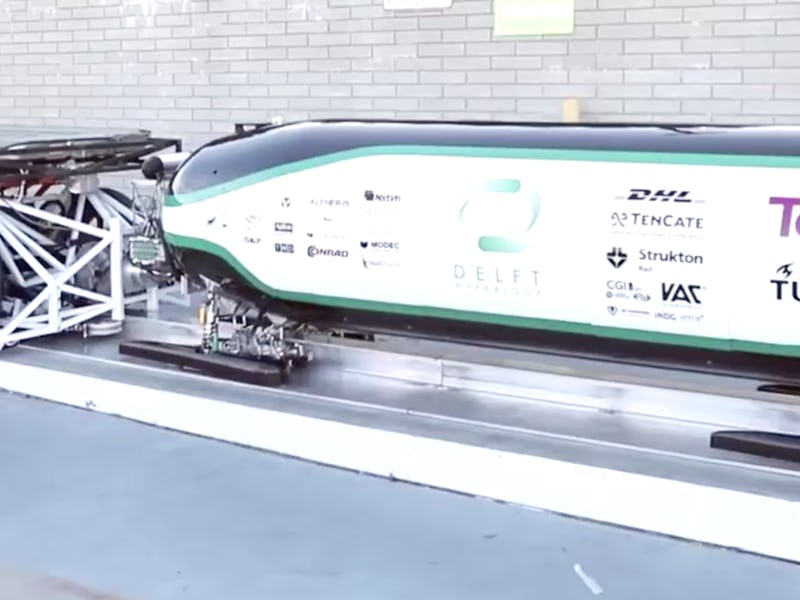Gearing up for the SpaceX Hyperloop Pod Competition, 30 student teams from around the world traveled to SpaceX’s Hawthorne, California base this week to test their designs in a vacuum-controlled track.
This is the third part of SpaceX’s competition to spur innovative designs for a future Hyperloop. The notion here is that the technology can be applied to different vehicles arranged in different ways. Also the equation of competition + hype = affordable, good ideas and labor, which are two things any project needs.
Passenger pods in Musk's white paper.
Last year a team from MIT won the Hyperloop Design Competition. But, given that this year’s competition will involve testing on an actual, mile-long track, it’s anyone’s guess who could take the top prize. The prototypes for the pods will have to be able to travel through a tube with a concrete layer and aluminum plates on the bottom, and an aluminum rail on the top, with welds about a half-inch tall.
Originally, SpaceX planned on having the teams test out their prototypes in June, but the event had to be pushed back twice in order for the Hyperloop track to be completed. The design round of the challenge featured 125 entries, but only ten teams advanced to compete in the testing round.
Musk’s vision has garnered skepticism from critics, but that hasn’t stopped engineers, including the ones at Hawthorne this week, from trying to make the hyperloop a reality.
Hyperloop tubes are displayed during the first test of the propulsion system at the Hyperloop One Test and Safety site on May 11, 2016 in North Las Vegas, Nevada. The company plans to create a fully operational hyperloop system by 2020.
On the commercial side of hyperloop, LA-based company Hyperloop One, considered a front-runner in the race to make it a reality, is backed with $80 million in funding. It has various projects across the globe in the works: It claims it will make the commute between Finland and Sweden a 30-minute hop by 2038. There are also plans for a shipping route from Russia to China. It’s also involved in the Dubai Accelerators Program.
In May, the company held the first ever public hyperloop test in Nevada, showing successful movement for five seconds.

The pods being designed by university teams (see the SpaceX video above) now could be very similar to the ones private companies like Hyperloop One uses to transport passengers through its tubes in the future. The successful university teams will be able to test their human-scale pods during a competition weekend at the track, scheduled for January 27-29, 2017, and all the knowledge gained will be made open-source.
